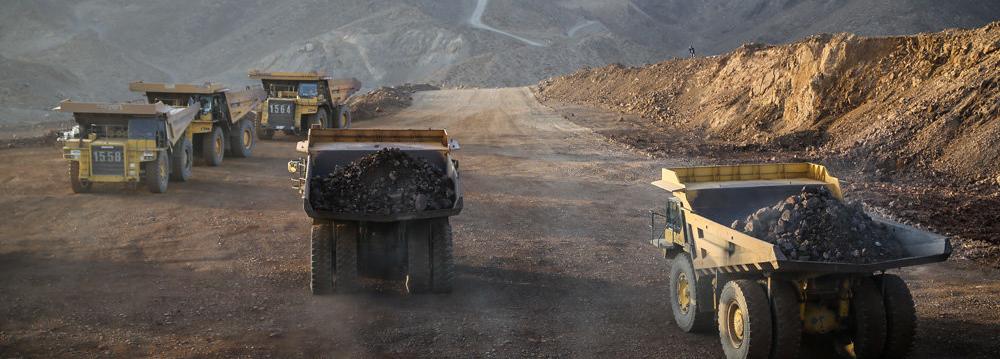Deep mining explorations are required to increase mineral reserves, Deputy Industries Minister Jafar Sarqeini told a press conference on Saturday.
Authorities in the mining sector say new explorations could help double Iran's iron ore and copper reserves, the Persian daily Donya-e-Eqtesad reported.
“Last year [March 2018-19], 460 million tons of minerals were produced in Iran, which was 10% less than what we expected. In the current year, 550 million tons have been planned but we hope to reach 500 million tons,” he said.
Sarqeini noted that Iran’s mineral reserves will only last until the fiscal 2030-31.
“This is while statistics on proven and probable mineral reserves have been based on explorations over a small area of the country with a low depth of excavation dating back to many years ago,” he said.
The deputy minister stressed that miners have yet to explore and discover new reserves.
$5.6b in Mineral Trade Surplus
A total of 57.7 million tons of mineral products worth $9.22 billion were exported from Iran during the last fiscal year, down 5% and 2% in tonnage and value respectively compared with the year before.
Imports stood at 3.34 million tons worth $3.57 billion, down 41% in tonnage and 34% in value year-on-year, latest report released by the Iranian Mines and Mining Industries Development and Renovation Organization shows.
Iran's trade of mineral products recorded a surplus of $5.65 billion during the period under review.
Semi-finished and finished steel products took the lion’s share of exports in terms of value, as 8.9 million tons worth $4.11 billion were shipped overseas, up 3% and 17% YOY in volume and value respectively.
Steel also had the largest share among Iran's mineral imports during the year in terms of value, as 1.32 million tons worth $1.28 billion were imported, down 56.7% and 44% in tonnage and value respectively YOY.
Mineral exports had a 49% share in tonnage and 21% share in value of Iran’s total exports during the 12-month period, while mineral imports had a 12% and 9% share in tonnage and value of Iran’s total imports respectively.
Exports to Continue Despite Sanctions
Sarqeini said mineral exports are expected to be not less than last year's volume despite US sanctions, as domestic demand will be fully met.
US President Donald Trump reimposed new sanctions on Iran last month, targeting the Islamic Republic’s export revenues from its industrial metals sector.
An executive order issued by Trump covers Iran’s iron, steel, aluminum and copper sectors, the Islamic Republic’s largest non-petroleum sources of export revenue and 10% of its export economy, a statement from the White House said.
The announcement was made on the anniversary of Trump’s unilateral withdrawal of the United States from a 2015 landmark deal between Tehran and world powers to curb its nuclear program in exchange for easing some sanctions and hours after Tehran said it would no longer fully comply with the accord.
After the new sanctions were announced, Sarqeini dismissed concerns about the measure saying high-quality Iranian products have their own international customers.
"It is unlikely that the sanctions imposed by US President Donald Trump would significantly affect Iran’s metals industry," he was quoted as saying by Tasnim News Agency, adding that he saw no reason for concern due to the excellent quality of Iranian metals that meet international standards.
He also informed the conference that the Industries Ministry has put the revival of 500 small mines on its agenda this year.
As reported by IRNA, the ministry has allocated $200 million for the development of mineral explorations to Geological Survey & Mineral Explorations of Iran.
According to the deputy minister, Iran’s mineral output was worth $20-22 billion last year.
“The ministry is against export of unprocessed stones,” he said, lamenting the fact that high quality stones are exported from Iran without being processed while processing is often restricted to stones of inferior quality.
Iran is home to 68 types of minerals with more than 37 billion tons of proven reserves and 57 billion tons of potential reserves.
According to the United States Geological Survey, Iran holds the world's largest zinc, ninth largest copper, 10th largest iron ore, fifth largest gypsum and barite, and 10th largest uranium reserves.
Overall, Iran is home to more than 7% of global mineral reserves.


